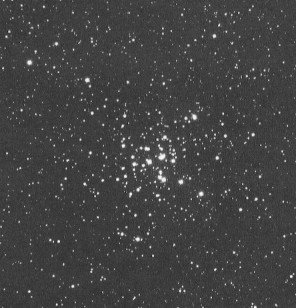Current Info for Observer
as of 04/24/2024 4:36 p.m.
Please login to view current observation details
General Info
| Type | Open Cluster |
| Constellation | Auriga |
| Right ascension | 5h36'17.700'' |
| Declination | +34°8'27'' |
| Magnitude | 6.300 |
| Distance | 4,100ly |
| Size | 12 arc min |
| Catalog Designations | NGC1960, M36 |
| Discovered | 1654 Giovanni Hodierna |
Generate a finder chart
The following form will generate a PDF finder chart suitable for printing using to locate objects in the sky with your telescope!
The Date is only really useful for solar system objects, as deep space objects move measurably only on a galactic timescale.
The larger the F.O.V (field of view), the more "zoomed out" the object will appear. It can be helpful to print several charts of the same object with different field of views.
Limiting the magnitude (remember, lower magnitude means brighter!) of stars and objects can make sure your chart is not cluttered with dim objects that you may not be visible to you anyway. The defaults are good, but try experimenting with raising and lowering the values.
Orion XT8
20 points
hard to find with only a red dot finderscope. very hard to star hop.
10" Dobsonian
20 points
4.5in starblast
20 points
Small but bright. Another M6 look alike. Looked at this during the perseid meteor shower.
Orion 10'' SkyQuest dobsonian
20 points
I decided to hunt down the open clusters of Auriga tonight. Not a difficult task, as they are all visually pretty close to each other and Auriga is a well defined constellation with plenty of bright stars.
M36 is the first cluster I landed on, inside the box of the constellation. There are maybe 50 distinguishable stars tonight. It is a large bright open cluster, with a hint of nebulosity off to one side. I've heard that is another open cluster in the background, but I can't know for sure. As I was observing, a satellite crossed my field of view. Those things are becoming a nuisance!
Please login to post comments
